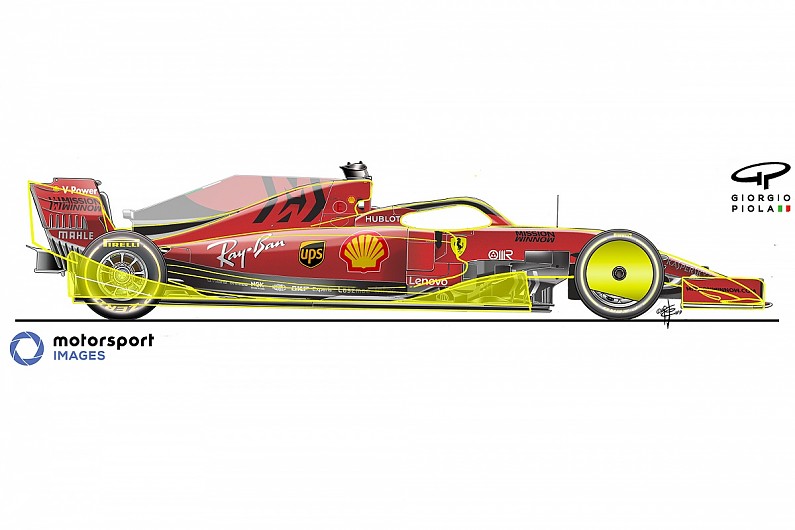Formula 1 has established a ‘rule breaking’ group using its top aerodynamic engineering staff to try and expose potential loopholes that could stop the 2021 regulations successfully improving racing.
With F1 and the FIA now in discussions with teams about finalising the details of the new rules, there is a determination to ensure that the aim of delivering better racing is not derailed by grey areas in the rules being exploited.
The main concern is that teams could find ways to exploit the regulations to boost their own speed, while at the same time wrecking F1’s efforts to help cars follow closely.
Data from the latest 2021 car concept shows that the downforce loss when following another rival closely has been reduced from the current 45% to between 5-10%.
Nikolas Tombazis, the FIA’s head of single seater technical matters, says that an unprecedented effort is now being made to ensure work on rules that encourage good racing is not derailed.
“There is work there to [stop teams looking to] ‘break the rules’ – what was lacking in previous attempts [to change things],” said Tombazis.
“With new regulations, it is an opportunity to really try to push them to the extreme, and see ourselves if certain areas have loopholes, or if other unintended consequences would emerge from the rules.
“If we have an opportunity to do this ourselves, then it means we may avoid some certain rules that otherwise could create problems later.
“My colleagues at F1, in their aero department, have now put a hat on.
“It is not as a rulemaker, it is like an aero team trying to do the work of the aero [team at an F1 squad] and seeing how much they can stretch the rules.
“Part of that is also to establish whether finding a wing that creates more downforce and is much more efficient, if it negates some of the good things have been achieved with the following car’s performance.
“If such cases are found, then we will react to try to avoid these issues.”
While it is hoped the teams and the FIA can agree on the rules by September 15, ahead of ratification by the World Motor Sport Council by October 31, F1 is clear that work on improving the regulations and removing further loopholes will not end then.
F1’s managing director of motorsport Ross Brawn said: “The group we have at FOM will not stop work when the rules are issued. That group is going to carry on working.
“As we see the team’s solutions evolve, we will analyse those solutions and, if we understand they are starting to negate the objectives, we will steer it back again.”
Tombazis added: “We are aware that when development takes place from teams who don’t care what the following car performance is like, and just care about the front car, that may negate some of these gains.
“Our task is to make rules that try to prevent that as much as possible. This ‘breaking the rules’ process is to avoid this happening, to keep all the gains.”
